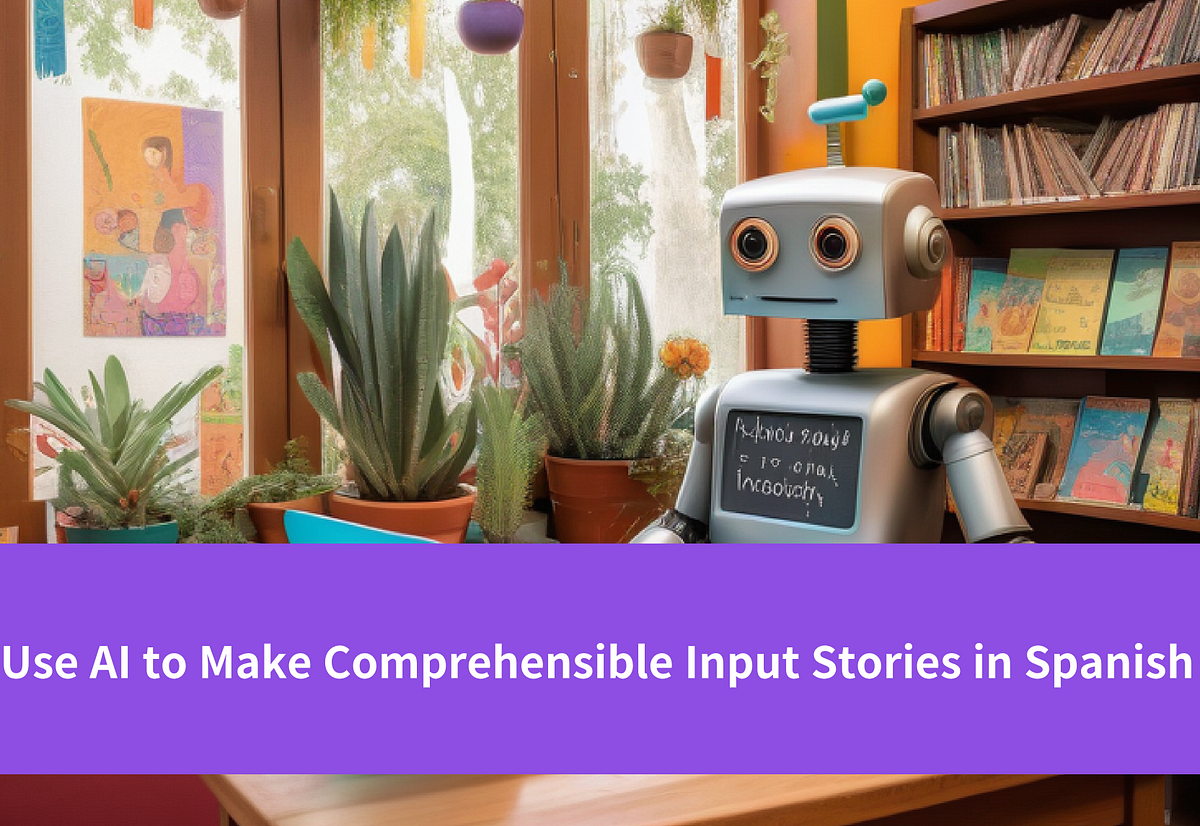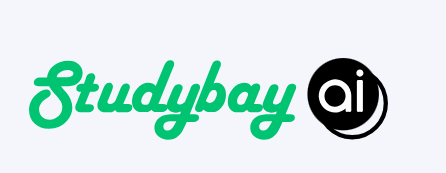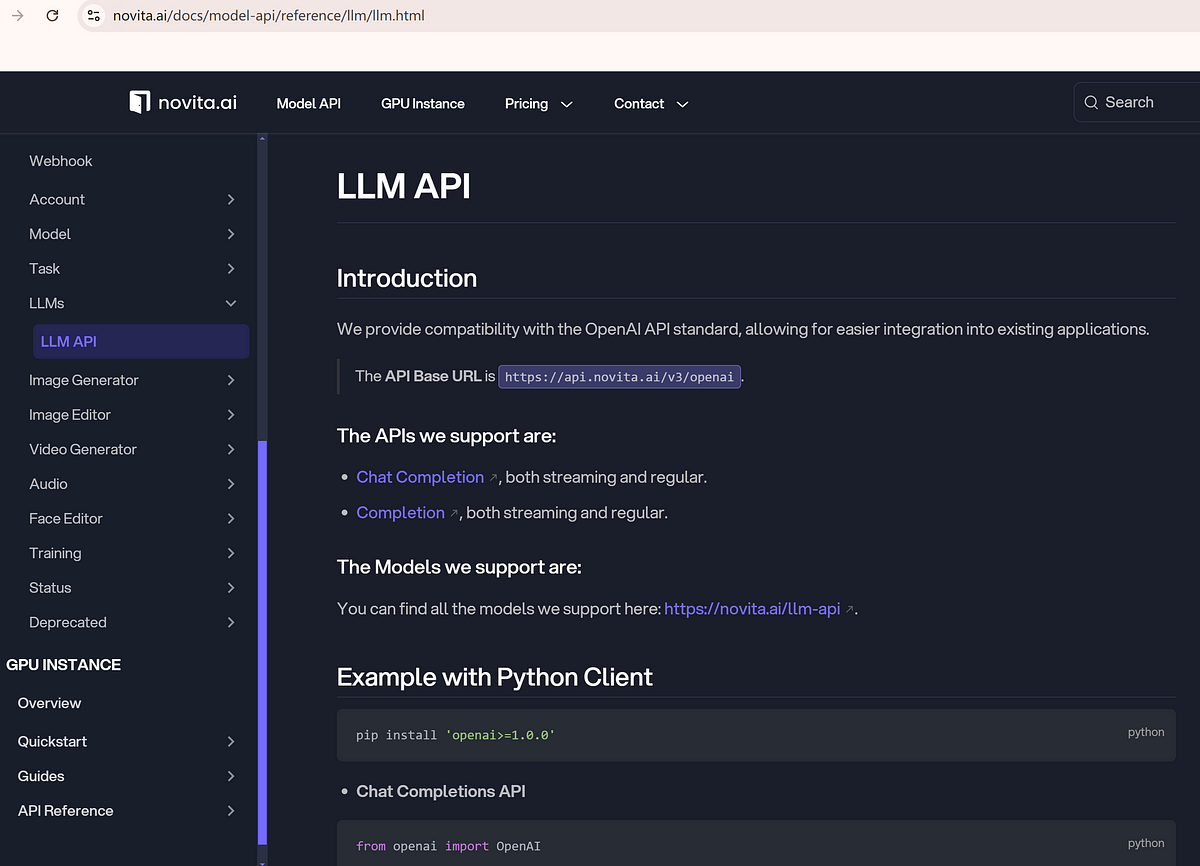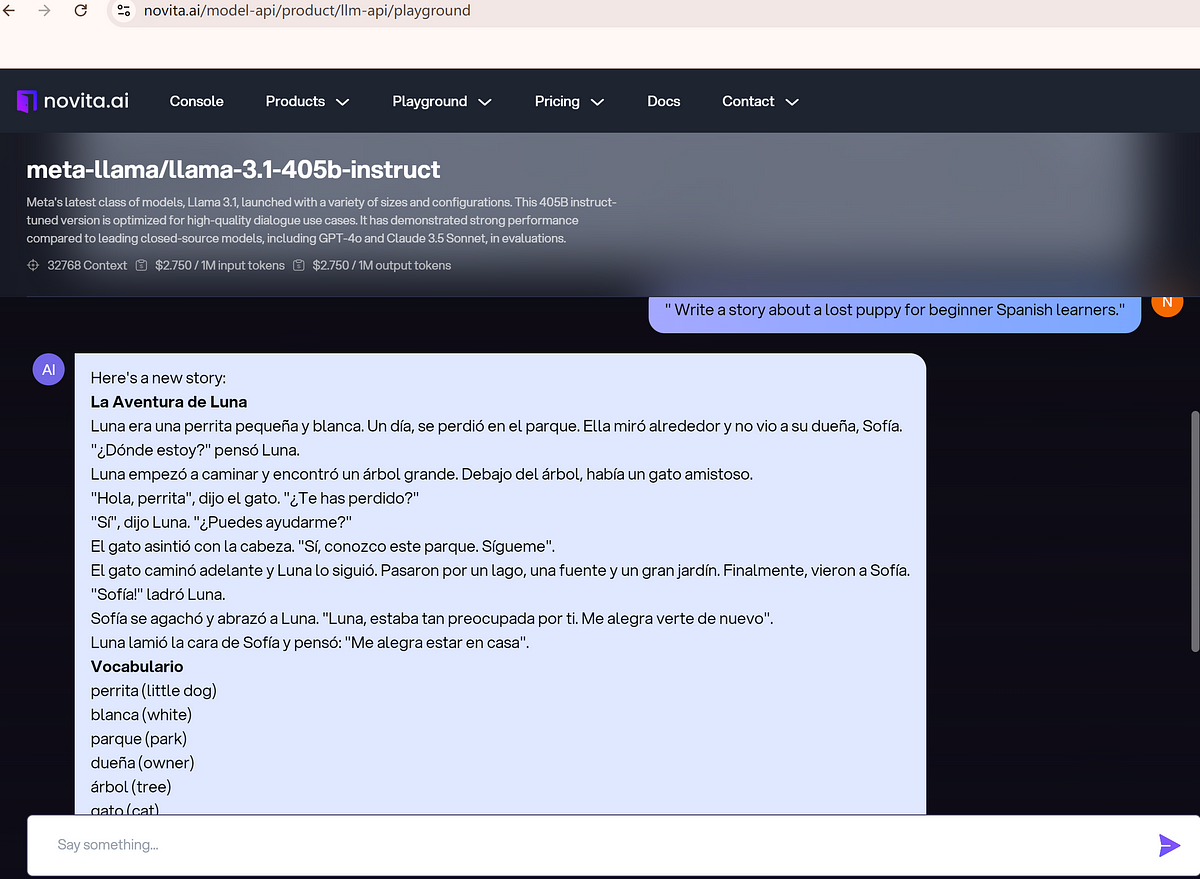Using AI to Create Comprehensible Input Stories in Spanish: Tips for Development

Create engaging stories in Spanish with AI technology. Learn how to use AI to make comprehensible input stories in Spanish on our blog.
Key Highlights
- Personalized Learning: AI tailors lesson plans and exercises based on individual progress, making language learning more effective and engaging.
- Comprehensible Input: The concept of comprehensible input emphasizes exposure to slightly challenging material, which AI can facilitate by simplifying texts while retaining their core meaning.
- Global Market Growth: The digital language learning market is projected to grow significantly, driven by advancements in AI and personalized learning solutions.
- Practical Implementation: Tools like Perchance, LumenWriter, Eduaide, and Studybay offer diverse functionalities to support language learners in crafting comprehensible input stories and enhancing their writing skills.
- Development of Custom AI Tools: A step-by-step guide outlines how to create AI tools for generating tailored Spanish stories, focusing on learner engagement and comprehension.
Introduction
In recent years, AI has revolutionized language learning, moving beyond traditional textbooks and classes to offer personalized, engaging experiences. By leveraging AI technology, learners can access customized content that adapts to their strengths and weaknesses, enhancing motivation and study outcomes. This blog explores the transformative role of AI in language acquisition, particularly in creating comprehensible input for Spanish learners. Learn how to use them and develop your own AI Spanish Story Tool in this blog!
Understanding AI’s Role in Language Learning
In the past, learning a language typically involved textbooks and classes. While effective, these methods often lack the personal touch and fun many learners seek. AI offers new learning options tailored to individual preferences. It analyzes strengths and weaknesses, customizing content and exercises for each learner. This personalized approach fosters motivation, sustaining interest and improving study outcomes.
The Basics of Comprehensible Input in Language Acquisition
Learning a language well hinges on comprehensible input, a concept by language expert Stephen Krashen. It suggests that we learn best when exposed to slightly more challenging information than what we already grasp. Understanding the main idea, even without knowing every word, helps our brains form connections and enhance language skills over time. This approach prioritizes meaning over grammar rules and ensures learners are appropriately challenged to maintain interest and motivation in learning.
Why AI Is a Game-Changer for Learning Spanish
Now more and more people try to use AI to make comprehensible input stories in Spanish. Here are some reasons.
- Personalized Learning: AI tailors lesson plans to individual students, assessing progress and identifying areas for improvement, making learning more effective and engaging.
- 24/7 Accessibility: AI acts like a tutor available anytime, anywhere, providing constant support and breaking down barriers to language learning.
- Comprehensive Language Support: AI provides instant translation, grammar explanation and vocabulary memorization tools for all aspects of language learning in an effective way.
- Enhanced Vocabulary Building: AI tools use spaced repetition and customized flashcards to make vocabulary learning more engaging and effective.
- Flexibility: AI removes geographical and time constraints, allowing learners to study Spanish whenever and wherever they choose.
Here are influencers showing their experiences using AI to learn Spanish. For details, you can watch this YouTube video about learning Spanish in 2024.
How AI Transforms Spanish Language Stories into Comprehensible Input
- NLP in Simplifying Complex Texts: AI simplifies complex Spanish texts through NLP, breaking down content for language learners while retaining the main meaning and adjusting grammar. By shortening sentences, replacing complex words, and adjusting verb tenses, AI enhances comprehension without losing the essence or becoming monotonous.
- Creating Engaging and Understandable Content with AI: Learning a new language can be challenging when finding suitable reading materials. AI personalizes your learning by adjusting text difficulty to your level. Start with beginner-friendly stories, progress with new vocabulary and grammar rules introduced gradually by AI. Customize content to match your interests, such as history, science fiction, or romance.
Global Market Growth: Opportunities for Language Learning
Global Market Statistics
The global digital language learning market was valued at US$ 23.16 billion in 2023 and is projected to exceed US$ 101.94 billion by 2032. The market is expected to grow at a CAGR (Compound Annual Growth Rate) of 17.9% during the forecast period from 2024 to 2032. Over 4.7 billion people worldwide own smartphones, with 43% of them using digital language learning applications, indicating a large and engaged user base. For more info, you can see details in the Global Digital Learning Market Statistics Report.

Drivers
- Technological Advancements: Significant growth is attributed to advancements in Artificial Intelligence (AI) and Machine Learning (ML), which have enhanced personalized learning experiences. Investments in AI for education reached $6 billion in 2021, with 40% directed towards personalized learning solutions, indicating a strong market driver.
- Gamification: The integration of game elements into language learning platforms has emerged as a key trend, increasing user engagement and retention. Approximately 60% of digital language learning platforms integrated gamification in 2022, with platforms like Duolingo reporting a 50% higher retention rate among users engaging with gamified lessons.
- Personalized Learning Experiences: AI-driven platforms offering personalized learning paths have shown faster language acquisition rates, with 40% of users on such platforms showing improved learning outcomes.
Target Users
- Students: Individuals seeking to improve language skills for academic purposes.
- Professionals: Employees aiming to enhance communication skills for career advancement.
- Travelers: Tourists wanting to learn basic phrases for navigation and interaction.
- Language Enthusiasts: Hobbyists interested in learning new languages for personal fulfilment.
- Educators: Teachers looking for resources to support language instruction.
- Non-native speakers: People who want to improve fluency and comprehension in a second language.
How to Use AI for Spanish Learning
Starting your AI-powered Spanish learning journey is simple. Define your goals: fluency, reading skills, or vocabulary. Explore AI tools like language learning apps, chatbots for conversations, and programs for personalized flashcards. Let’s use ai to make comprehensible input stories in Spanish and do more than that.
Selecting the Right AI Tools for Spanish Learning
With numerous AI language learning tools to choose from, selecting the right AI assistants for your Spanish learning journey requires careful thought. Assess your skill level — beginner or intermediate. Beginners should opt for apps with structured lessons, while advanced learners can benefit from AI conversation partners and writing aids for personalized feedback. Consider your learning style — do you prefer gamified experiences or cultural immersion? Experiment with different AI platforms to find your ideal match.
Integrating AI into Daily Spanish Learning Practices
Consistency is key in language learning. Use AI to make comprehensible input stories in Spanish and practice for 15–20 minutes at a specific time. Short, regular sessions are more effective than long study hours. AI language apps provide lessons, games, and quizzes for on-the-go practice with instant feedback for quick error correction. Boost fluency and confidence by using AI chatbots for conversational practice in Spanish.
Popular AI Tools for Crafting Comprehensible Input Stories
AI tools now offer easy-to-understand stories tailored to your reading level, making learning enjoyable and stress-free. Try to use AI to make comprehensible input stories in Spanish now. Whether you’re a beginner or an advanced learner, these tools adapt story difficulty to enhance your language skills effectively.
Perchance

Perchance is a web-based platform that allows users to create random stories and narratives using an AI story generator. It provides customizable templates and tools for generating unique content based on user inputs.
By the way, if you want to know more about this tool, you can watch this YouTube video about story generator.
LumenWriter

LumenWriter is an AI-powered writing assistant designed to help users improve their writing skills by providing real-time suggestions, grammar corrections, and style enhancements. It aims to streamline the writing process and enhance clarity and coherence in written communication. Get instant feedback on your writing style, grammar, and syntax for essays, paragraphs, or short stories.
Eduaide

Eduaide is an AI-driven educational platform that offers personalized tutoring, lesson planning and learning support for students across various subjects. It provides tools for homework assistance, study resources, and skill development to help you pass Spanish language exams.
Studybay

Studybay is an online educational platform that connects students with professional writers and tutors for academic assistance. It offers services such as custom essays, research papers, and tutoring in various subjects.
How to Develop an AI Tool to Make Comprehensible Input Stories in Spanish
Since it’s hard to choose the AI tool to meet specified needs, you can develop a tool to tailor different demands. We recommend AI service platforms like Novita AI to simplify your integration process. Novita AI offers cost-effective and seamless LLM API services to accelerate your AI businesses.
Step-by-step Guide to Develop an AI Tool to Create Comprehensible Spanish Stories
Step 1. Define Learning Objectives: Identify key Spanish language skills and proficiency levels to target with comprehensible input stories.
Step 2. Leverage LLMs:
- Sign up or log in with a Google/ Github account at Novita AI. You will get $0.5 credits upon your first log in.
- Go to the Novita AI Dashboard to get your API key. You can also click “add new key”.
- Navigate to LLM API Reference to enter your key. We provide detailed instructions and docs about how to use API. You can view more info on this page.

- Integrate LLMs to generate relevant and contextually appropriate Spanish content.
Step 3. Comprehensible Input Focus:
- Use AI to make comprehensible input stories in Spanish, ensuring they are easily understandable and match learner proficiency.
- Here we take the latest and advanced open-source model by Meta, Llama 3.1 405B as an example.
- The prompt is “Write a story about a lost puppy for beginner Spanish learners”. You can try more models on the Novita AI LLM playground.

Step 4. Content Customization: Allow personalization of stories based on learner interests, age, and learning style to enhance engagement.
Step 5. Interactive Elements: Incorporate questions, prompts, and feedback within the stories to reinforce learning and maintain engagement.
Step 6. Multimedia Integration: Add visual and auditory elements to stories to support various learning styles and enhance comprehension.
Step 7. User Feedback: Implement features to track learner progress and adjust content dynamically based on performance. Gather learner feedback to refine and improve the quality of the AI-generated stories.
Step 8. Iterative Development: Continuously update the AI tool based on user data, feedback, and advancements in LLM technology to improve story quality and relevance.
Tips for Enhancing Your Spanish Learning Experience with AI
AI language learning tools offer a personalized learning journey for multilingual learners. Take control of your language learning with AI for a more enjoyable path to fluency in Spanish speaking or writing. There are tips about how to use AI to make comprehensible input stories in Spanish.
Customizing AI-generated Stories for Varied Skill Levels
AI-powered learning adapts content to your skill level. Whether you’re a beginner or at an intermediate stage, AI tailors stories for easy comprehension. As you progress, complexity increases with new grammar concepts and idioms. Personalized stories align with your goals, like preparing for Spanish exams by focusing on common vocabulary and structures typically found in tests.
Tracking Progress and Adjusting Difficulty with AI Feedback
Regularly assessing your language learning progress is crucial. AI tools provide insights and identify areas for improvement, acting as a virtual tutor tailored to your needs. They suggest specific improvements based on your performance, optimizing your learning journey in the enhanced learning environment.
Conclusion
In conclusion, AI has changed how we learn languages. It makes understanding Spanish easier and more fun. AI simplifies tough texts, makes interactive content, and personalizes stories for different skill levels. This improves the learning experience. It also gives feedback to help you track progress and adjust challenges. Using AI tools that match your style can greatly improve your Spanish skills. So, explore AI-driven language learning and find new ways to master Spanish with confidence. Use AI to make comprehensible input stories in Spanish. Start your journey today to become bilingual!
Frequently Asked Questions
What are comprehensible input stories?
Comprehensible input stories are made to be easy for Spanish learners to understand. They use simple grammar and vocabulary. The stories are also fun to read. This helps learners build their language skills naturally.
Can AI really help me learn Spanish more effectively?
AI can improve your Spanish learning experience. It gives you lessons that fit your needs, fun exercises, and quick feedback. AI adjusts to how you learn and how fast you go.
What is the AI for Spanish writing?
AI tools provide personalized writing exercises for Spanish learners and offer real-time feedback on your writing. Now use AI to make comprehensible input stories in Spanish.
How do I start using AI for learning Spanish?
To start learning Spanish with AI, choose an app or chatbot that suits your needs. Most have free options and upgrades available to kickstart your Spanish learning journey!
Novita AI is the All-in-one cloud platform that empowers your AI ambitions. Integrated APIs, serverless, GPU Instance — the cost-effective tools you need. Eliminate infrastructure, start free, and make your AI vision a reality.
Recommended Reading